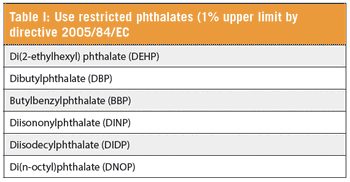
This application note demonstrates rapid automated extraction and UPLC analysis of cannabinoids from hemp flower.

This application note demonstrates rapid automated extraction and UPLC analysis of cannabinoids from hemp flower.

This application note demonstrates rapid automated extraction and UPLC analysis of cannabinoids from hemp flower.

A simple 20-minute extraction to quickly prep plastics for additive analysis by UPLC.

This application note demonstrates rapid automated extraction and UPLC MS/MS analysis of pesticide residue from a variety of spices.

This application note demonstrates rapid automated extraction and LC/GC analysis of over 400 pesticides from cannabis flower.

Rapid alternative to QuEChERS that performs a single-step-automated extraction and water removal for the pesticide analysis from Tomatoes, Green Peppers, and Cucumbers.

This application note demonstrates rapid automated extraction and LC/GC analysis of over 400 pesticides from cannabis flower.

New sorbent for water mitigation in rapid automated extraction and UPLC MS/MS analysis of pesticide residue from a strawberry.

Rapid alternative to QuEChERS that performs a single-step-automated extraction and water removal for the pesticide analysis from Tomatoes, Green Peppers, and Cucumbers.

This application note demonstrates rapid automated extraction and UPLC MS/MS analysis of pesticide residue from a variety of spices.

New sorbent for water mitigation in rapid automated extraction and UPLC MS/MS analysis of pesticide residue from a strawberry.

Branching impacts polymer properties such as rheology and stiffness. This note explains the analysis of branching ratio vs. molar mass, accomplished by SEC-MALS( -IV).

• The EDGE extraction system is fast, automated, and highly flexible. • Case studies using the EDGE® extraction system.

In this note, the molecular weight averages and molecular weight distributions of two hydroxyethyl starch (HES) samples were successfully demonstrated.

To address environmental concerns that may arise from PFOS and PFOA, two GC–MS methods–PCI-SIM and EI-MRM–were optimized for detection of PFOS and PFOA precursors.

A simple 20-minute extraction to quickly prep plastics for additive analysis by UPLC.


Antibody molecular weight analysis can now be easily performed on the Shodex PROTEIN LW-803.

30mer oligonucleotides were analyzed with the Shodex HILICpak VN-50 coupled with LC/UV/ESI-MS detection without the need of ion-pair reagents.

This application note presents calibration plots, RSDs, and MDLs for IEC Method 62321-8 using a CDS Model 6150.







In addition to the weight-average molar mass and the polydispersity, the DAWN can also determine the shape of the polymer by measuring the rms radius directly at each elution volume. It is well-known that butadiene forms highly branched polymers and that styrene forms linear polymers-and this is revealed by the DAWN.

Traditionally, simple analytical characteristics (for example, content of epoxy groups, chlorine, α-glycol groups, viscosity or softening point) are used to identify epoxy resins.

The physical properties and behavior of polymers depends strongly on the properties of the polymer molecules themselves

Synthetic elastomers have replaced natural rubber to an astonishing degree, and account for more than 70% of the rubber used today.